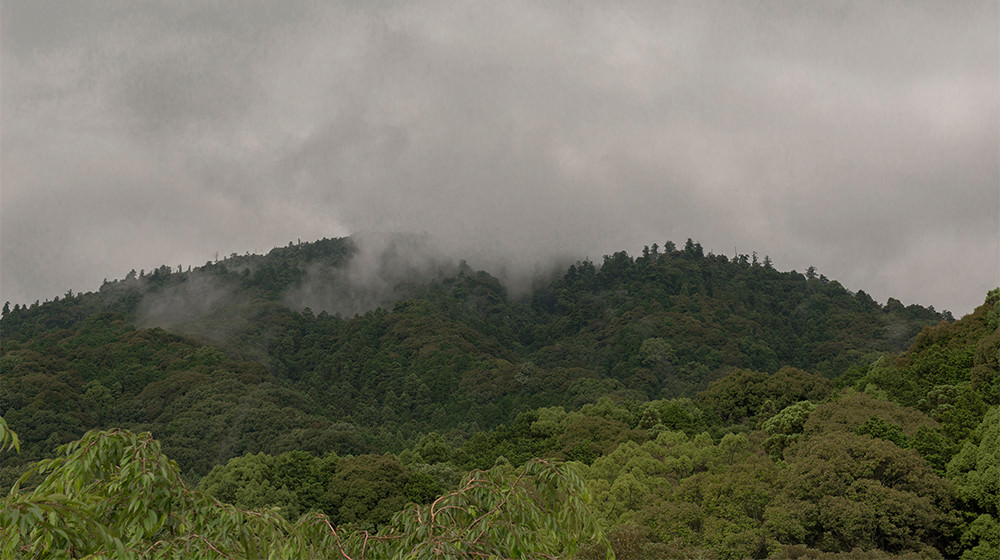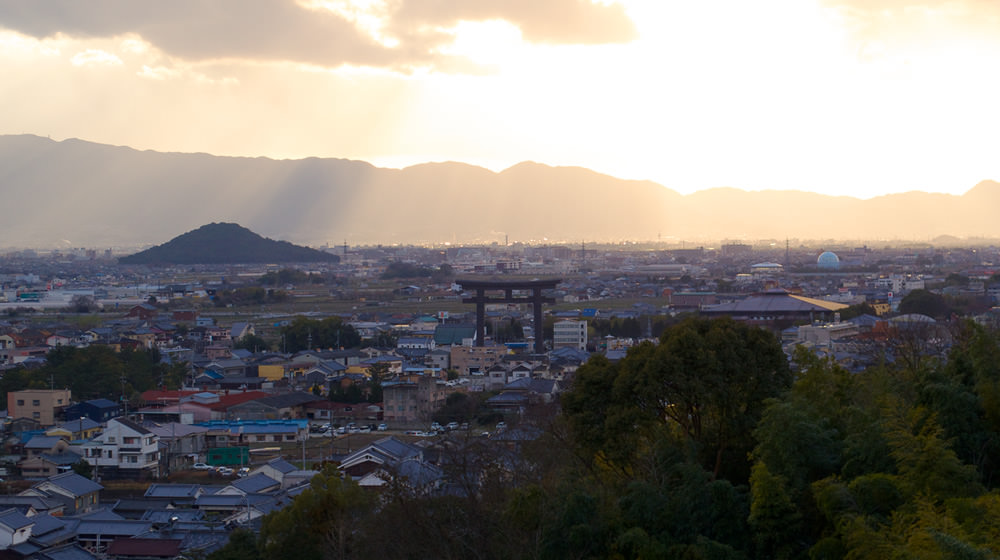A fairytale setting with a solemn atmosphere
Omiwa Jinja Shrine
(Construction predates historical record)
大神神社
A traditional shrine that appears many times in ancient myths. It is said to be the oldest shrine in Japan. Mount Miwa was worshiped as a deity, and still retains this form of primitive Shintoism. The shrine's grounds are large, with several places to see dotting the foot of Mount Miwa. It is a good idea to take your time to visit each location while soaking in the power of Mount Miwa and the faith of the common people, unchanged for thousands of years.
Worship Hall / Reconstructed 1664 Important Cultural Property
Generally, at a shrine, the building where the object of worship (believed to contain a deity itself) is supposed to rest is called the “inner shrine” (Honden). Prayers are offered from a “worship hall” building towards the inner shrine. Usually, visitors come to pray right in front of the offertory box located at the entrance of the worship hall. However, since Omiwa Jinja Shrine reveres Mount Miwa itself as a deity, there is no inner shrine. By revering nature itself as a deity, it retains the shape of Shinto at its inception.
Mitsutorii (Three Unified Torii)
This Torii archway is an important point which separates the divine Mount Miwa and the worship hall. As the object which takes the role of the inner shrine, it is now viewed as sacred itself. A Mitsutorii is also called "Miwa Torii"; a unique Torii symbolizing the primitive faith of Omiwa Jinja Shrine.
Eggs and Sake
The "Nihon Shoki" (written 720, the oldest chronicles of Japan's history), there is a tale that the deity of Omiwa Jinja Shrine - Omononushi - once appeared here in the form of a snake. Accordingly, offerings of Sake and chicken's eggs are placed around the grounds, as they are believed to be the snake's favorite foods.
Mount Miwa
Mount Miwa has never been subject to logging due to its sacred status, and retains its forests untouched from thousands of years in the past. Visitors can climb the mountain. The journey takes about one hour each way. As the mountain is a sacred site, eating, drinking, photography, and using mobile phones are prohibited. Some worshipers climb barefoot to better feel the power of the mountain. Foreigners can climb the mountain under the following conditions.
- If accompanied by a Japanese guide or able to speak Japanese fluently.
- If carrying a cell phone with regular Japanese service.
Omiwa Forest Observatory
This observatory is situated at a high point that offers a beautiful view of mountains and the 32.2m Torii that rises over Sakurai Town. The three seemingly-small hills to the left are Mount Miminashi, Mount Unebi, and Mount Kagu from right to left. These three together are called the “Yamato Sanzan” (meaning Yamato three mountains) and are written of in poems (tanka) from more than 1000 years ago. To quote one verse, “Mount Kagu was fond of Mount Unebi and fought with Mount Miminashi. As it has been since the age of deities, even now men fight over a single woman.” The beautiful sunset here is perfect for contemplating ancient times.
















